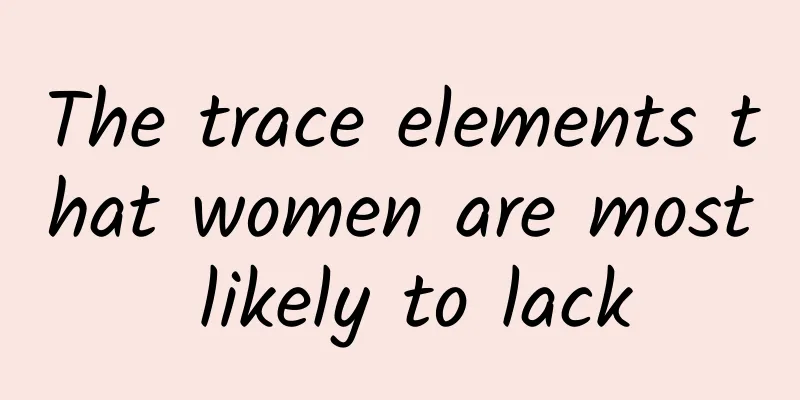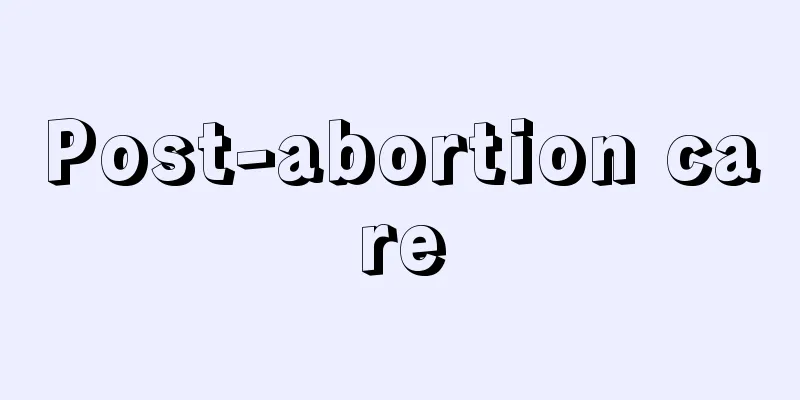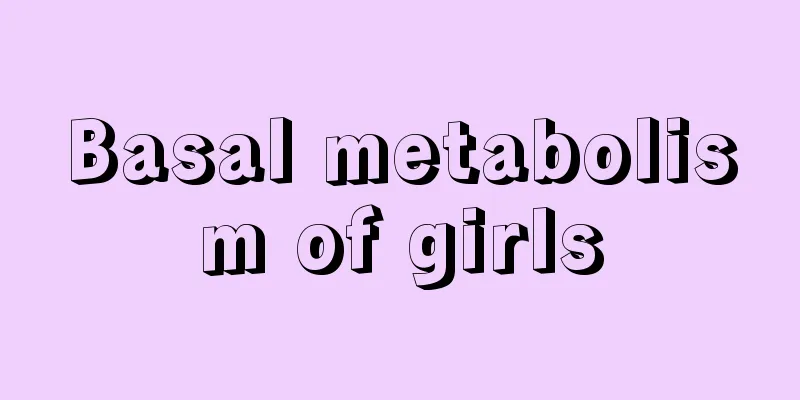The trace elements that women are most likely to lack

|
Author: Cui Yihui, registered dietitian, master of medicine Reviewer: Zhu Wenli, Professor and Master Supervisor, Peking University Health Science Center Straight to the point, iron is the trace element that women are most likely to lack, and iron deficiency may occur at any age. How much iron is in our body? Generally speaking, the total amount of iron in an adult's body is 4 to 5 g, which is equivalent to a small iron nail. Among them, 70% to 75% of iron is involved in the functions of hemoglobin, myoglobin and various enzymes, which is called "functional iron". 25% to 30% of iron is stored in the liver, spleen, bone marrow, etc., which is called "storage iron". Unlike calcium, most of the iron element is fighting on the "front line" on a daily basis, and the iron stored in the "iron warehouse" accounts for a small part. ●The role of iron in the human body Don’t underestimate this small iron nail. It is widely distributed in the human body. Iron can be found in almost all tissues, and it is at the “important checkpoints” of human metabolism. ❖Iron is an important component of hemoglobin and is involved in hematopoiesis and oxygen transport. ❖Iron is one of the main components of myoglobin and neuroglobin. It is involved in whether muscles are strong and whether the brain can function flexibly. ❖Iron is directly involved in human energy metabolism, because many key enzymes in the "production line" of energy production in human cells contain iron. Without iron, they will not work and metabolism will slow down. ❖Iron is also needed to maintain the “combat effectiveness” of many immune cells in the body. Iron deficiency leads to reduced resistance and susceptibility to illness. As a woman, you have to go through menstruation, pregnancy, breastfeeding, menopause and other unique or special physiological stages in your life. There is a contradiction between needing iron and losing iron easily. Therefore, women are more likely to be iron deficient than men. In developing countries, 30% to 40% of women of childbearing age are iron deficient. Symptoms of iron deficiency Iron deficiency does not necessarily lead to anemia. There are three main symptoms of iron deficiency. ❖ Bad mood : Many adolescent girls often experience emotional instability (emotional fluctuations, capriciousness), lack of concentration, memory loss, fatigue, and poor academic performance. This may be because adolescent girls have varying degrees of iron deficiency. The reason for iron deficiency is that the rapid development of the body during adolescence increases the demand for iron. On the other hand, the loss of iron increases due to menstruation, and an unreasonable diet structure cannot meet the body's needs. Figure 1 Copyright image, no permission to reprint ❖ Fear of cold : Women are more likely to have cold hands and feet and fear of cold. In addition to the reason of poor peripheral blood circulation, another possible reason is iron deficiency. In the UK, such an experiment was conducted. Researchers asked 10 healthy women and 10 women with iron deficiency anemia to stand in a swimming pool with a neck-deep water temperature of 29 ℃. After the same time, the two groups of women were examined and found that the body temperature of the anemia group of women was 0.7 ℃ lower than that of the healthy group of women on average, and the heat production was 15% lower than that of the healthy women. The metabolic rate was also lower than that of the healthy women group. Many other studies have also found that women with iron deficiency have reduced ability to resist cold. The reason may be that after iron deficiency, the synthesis of hemoglobin in the human body is reduced, the ability to transport oxygen is reduced, and the energy metabolism (heat production rate) cannot keep up with the heat energy required by the body to keep warm when the temperature drops, resulting in insufficient heat production, and people are naturally afraid of cold. Figure 2 Copyright image, no permission to reprint ❖Forgetfulness : As mentioned earlier, adolescent girls are prone to memory loss if they are iron deficient. Many middle-aged and elderly women during pregnancy, lactation and menopause are also prone to forgetfulness when speaking and doing things, which may be related to iron deficiency. Figure 3 Copyright image, no permission to reprint Iron is related to whether the oxygen supply to brain cells is sufficient. When iron deficiency occurs, the brain is not supplied with enough oxygen, fatigue is easy, and memory will be affected. In daily life, many women have the above symptoms, but rarely take the initiative to associate these situations with iron deficiency in the body. These symptoms are often warnings to the body before the symptoms of anemia, reminding us to adjust our diet in time and increase iron intake. When the body shows typical anemia characteristics, it means that the iron deficiency is already serious. Generally speaking, foods rich in iron are mainly red meat (pork, beef, lamb), animal liver (pig liver, chicken liver, etc.), pig blood, duck blood, and egg yolks and other animal foods, which are heme iron. Plant foods such as spinach, seaweed, black sesame, seaweed, red dates, cherries, etc. also contain iron, which is non-heme iron. Generally speaking, heme iron from animal sources has a higher absorption and utilization rate in the human body and is a more recommended iron supplement. While eating more iron-rich foods, it is best to supplement some fruits rich in vitamin C, such as kiwi, fresh dates, oranges, strawberries, etc. Vitamin C can promote the body's absorption of iron. For women in special physiological stages, especially adolescent girls, pregnant women, nursing mothers, middle-aged and elderly women and vegetarian women, relying solely on diet to obtain iron often cannot meet their needs. They can choose iron-fortified foods (iron-fortified soy sauce, iron-fortified rice and noodles) or directly choose iron dietary supplements. Figure 4 Copyright image, no permission to reprint |
<<: In addition to breastfeeding, what else should new mothers feed their babies?
>>: The benefits of eating raw fruits and vegetables from an enzyme perspective
Recommend
Is the increase of leucorrhea before menstruation a gynecological problem?
Menstrual abnormalities in women are very common ...
How to replenish the body after induced abortion
After 12 weeks of pregnancy, if the pregnancy has...
There are several possibilities for girls to have stomach pain
There are many reasons why girls have abdominal p...
Develop four small habits to protect your kidneys and keep you away from kidney disease!
1. Eat light food 95% of the salt in the diet is ...
Nine-valent cervical vaccine
In the past, medical technology was not well deve...
How many weeks is the most suitable for three-dimensional
The best time to use three-dimensional color ultr...
Recovery chart after female-to-male surgery
The desire to live and be accepted by the public ...
The difference between the symptoms of miscarriage and menstruation
It should be said that women nowadays are more ca...
What is the reason for the black color of the period?
After the menstrual period comes, if you find tha...
Girls' armpit hair
When girls enter puberty, estrogen will become mo...
What are the symptoms of precocious puberty in girls?
Precocious puberty is a very popular topic in mod...
How is Sanya International Duty Free Shop? Can Sanya Duty Free Shop issue invoices?
Summer is here, and girls love shopping. If you c...
Are food scraps healthy? Food lovers, read this
Faced with the problem of "food scraps sold ...
Will eating siomai for breakfast make you fat? How to preserve siomai if you make too much?
Shaomai is mainly made of glutinous rice and flou...
What to do if the contraceptive ring is displaced
Many people who do not want to have children for ...









